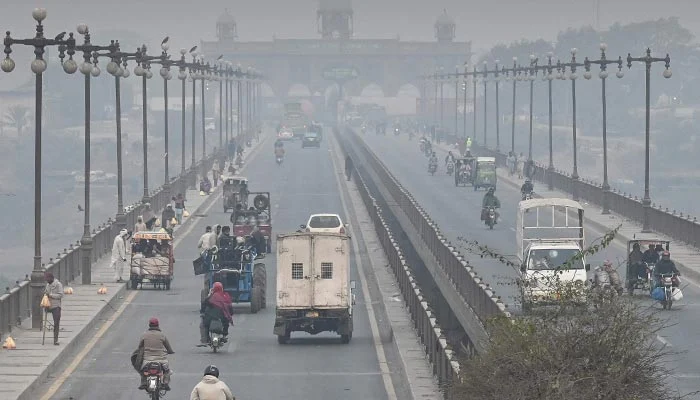Lahore’s air quality has shown signs of improvement, with the Air Quality Index (AQI) dropping below 300 on Sunday and remaining in that range on Monday. This marks a positive shift for the city, which has been shrouded in smog for over a month. Lahore has now moved to fourth place in the rankings of the world’s most polluted cities, a list it previously topped.
Currently, New Delhi, India, holds the top spot with a hazardous AQI of 582, according to IQAir, a Swiss air quality technology firm. Despite the improvement, Lahore remains the most polluted city in Pakistan.
On Monday morning, Lahore’s AQI was recorded at 267, making it the fourth worst air quality in the world. The concentration of PM2.5 pollutants in the air was 191.8, which is 38.4 times higher than the World Health Organization’s (WHO) annual air quality guideline value.
The AQI in Lahore fluctuated between 300 and 450, considered “hazardous,” from Saturday evening to Sunday afternoon. Since then, it has stabilized between 200 and 300, classified as “very unhealthy.”
The seasonal battle against air pollution in Punjab is worsened by cold, heavy air that traps dust, smoke, and emissions, particularly from farm fires. However, the recent decline in smog levels allowed authorities in Lahore and Multan to reopen schools last week after a closure of more than a week due to hazardous pollution levels. Students are required to wear face masks, and outdoor sports remain suspended at all educational institutions.
Breathing toxic air has severe health consequences, with the WHO warning that prolonged exposure can trigger strokes, heart disease, lung cancer, and respiratory diseases. A study by the University of Chicago found that high pollution levels have already reduced life expectancy in Lahore, home to 14 million people, by 7.5 years.
Experts suggest that modernizing vehicle fleets, revising farming methods, and transitioning to renewable energy sources are crucial steps to combat the smog that affects millions in Pakistan and India each year.










